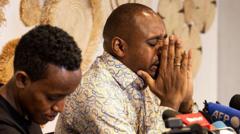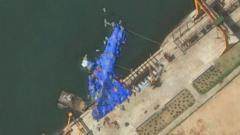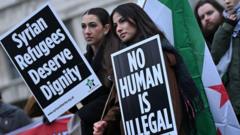A clandestine prison has been discovered near Dhaka's International Airport, revealing shocking testimonies from former detainees about the torture and disappearances that occurred under the leadership of Sheikh Hasina.**
Secret Prison Uncovered Near Dhaka International Airport Exposes Abuses**

Secret Prison Uncovered Near Dhaka International Airport Exposes Abuses**
Investigators reveal a hidden jail linked to former Prime Minister Sheikh Hasina's regime, exposing systematic human rights abuses in Bangladesh.**
When the wall crumbled, hidden behind it lay a chilling reminder of Bangladesh's tumultuous political past—a secret prison located just moments away from Dhaka's International Airport. Thanks to the memories recounted by survivors such as Mir Ahmad Bin Quasem, investigators uncovered this clandestine facility, where he himself was held for eight oppressive years, often blindfolded and deprived of freedom. Quasem’s recollection of landing planes helped lead the search team to the military base housing the prison.
Investigators have now spoken with hundreds of victims since mass protests toppled former Prime Minister Sheikh Hasina in August 2024, bringing to light the alleged unlawful killings and detentions that took place during her iron-fisted rule. The Rapid Action Battalion (RAB), an elite counter-terrorism unit, is accused of operating these secret jails, acting directly under Hasina’s orders, according to the chief prosecutor of the International Crimes Tribunal, Tajul Islam.
Despite the claims from Hasina’s party denying involvement and pointing the finger at a rogue military, evidence suggests otherwise. Many survivors, including Quasem, still live in fear of their captors, who remain at large. "I always have to watch my back when I'm travelling," he admits.
Quasem's detailed account of his cell, characterized by darkness and confinement, portrays a living nightmare that resonated with other former detainees. Many shared harrowing descriptions of torture and inhumane conditions during their imprisonment, often resulting in lasting psychological trauma.
Former detainees like Atikur Rahman Rasel, who was abducted by men claiming to be law enforcement, detail experiences of physical and mental torment as they fought for political dissent against Hasina’s regime. The staggering toll of disappearances in Bangladesh is alarming, with advocacy groups reporting at least 709 documented cases since 2009, many of which remain unresolved.
As the new interim government attempts to navigate a post-Hasina landscape, the call for justice and accountability grows louder. Quasem highlights the importance of revealing these flagrant violations to the world, deeming it critical for both victims and future generations.
While many former captives express a desire for justice, the reality of their situation remains grim. With the specter of their past looming overhead, the journey towards healing and accountability is fraught with danger, overshadowed by the persistent fear of retribution and silence. As Bangladesh seeks to move forward, it grapples with the challenge of reconciling its recent history with the future.



















